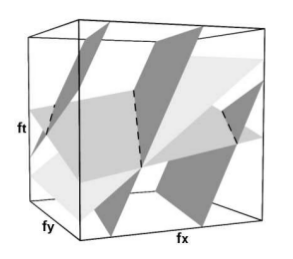Abstract

When an observer moves through a rigid 3D scene, points that are near to the observer move with a different image velocity than points that are far away. The difference between image velocity vectors is the direction of motion parallax. This direction vector points towards the observer’s translation direction. Hence estimates of the direction of motion parallax are useful for estimating the observer’s translation direction. Standard ways to compute the direction of motion parallax either rely on precomputed optical flow, or rely on motion compensation to remove the local image shift caused by observer rotation. Here we present a simple Fourier-based method for estimating the direction of motion parallax directly, that does not require optical flow and motion compensation. The method is real-time and performs accurately for image regions in which multiple motions are present.
Documents
